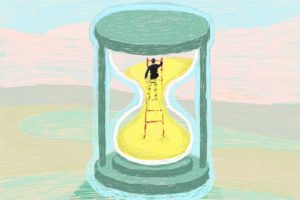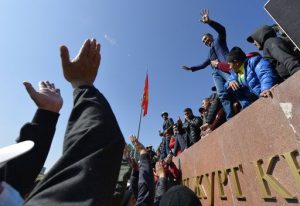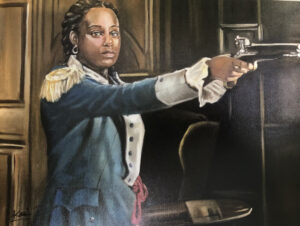The Stone Mountain Memorial Association, which is authorized by the state of Georgia to manage Stone Mountain Park, has denied the Sons of Confederate Veterans a permitto celebrate Confederate Memorial Day later this month in their facilities. In so doing, the Stone Mountain Memorial Association tacitly acknowledged the problematic relationship between the park and the legacy of the Confederacy.
Denying a permit to the Sons of Confederate Veterans is an important first step, but in the larger context of Confederate memorialization, it does not go nearly far enough.
When the Civil War, which was fought to preserve the institution of slavery, ended in 1865, Reconstruction promised to radically reimagine the United States by providing formerly enslaved people with full rights and citizenship. But this promise was not fulfilled because white supremacists successfully perpetrated racial terrorism to ensure that the goals of Reconstruction would never be realized. By the end of the nineteenth century, Confederate memorials were an important part of the propaganda campaign to deny Black people their rights.
As the Southern Poverty Law Center’s Whose Heritage? report clearly demonstrates, so-called heritage groups (including the Sons of Confederate Veterans and the United Daughters of the Confederacy) were most active in their efforts to erect Confederate memorials during two key moments: The first was around 1900 when Southern states were enacting Jim Crow laws to disenfranchise the newly emancipated African Americans. The second was during the 1950s, when even more Confederate memorials went up, likely in response to the Supreme Court’s Brown v. Board decision that legally desegregated schools. These memorials venerated the Confederacy and its values, glorifying a time when Black people were considered property.
The history of Stone Mountain fits directly into this narrative.
The United Daughters of the Confederacy first lobbied to build a monument on Stone Mountain in 1915, hiring Gutzon Borglum (who went on to design Mount Rushmore) to create it. The Ku Klux Klan held its first cross burning ceremony on the mountain that same year, and for decades Stone Mountain would serve as a meeting ground for the Klan, with cross burnings atop the mountain until the early 1960s. By the late 1920s, the project’s funds had run out and construction came to a halt. At the time, Borglum planned to have some kind of recognition for the Klan at the memorial to honor them for “sav[ing] us from Negro domination and carpet-bag rule.”
It was not until Marvin Griffin became governor of Georgia in 1955 that interest in creating a monument to Stone Mountain was revived in response to the emerging civil rights movement. A staunch supporter of segregation who railed against the Brown v. Board decision in his inaugural address, he used $1 million in public funds to purchase the mountain and created the Stone Mountain Memorial Association. As historian Grace Elizabeth Hale has noted, finishing the carving would “demonstrate to the rest of the nation that ‘progress’ meant not black rights, but the maintenance of white supremacy.”
Understanding this history helps contextualize why the Stone Mountain Memorial Association might hesitate to allow the Sons of Confederate Veterans to celebrate Confederate Memorial Day this year. But it also suggests why this response is so deeply inadequate, and demonstrates the need for a more robust reckoning with Stone Mountain’s history. This reckoning is necessary to facilitate community healing.
The Stone Mountain Action Coalition, a group dedicated to “creating a more inclusive Stone Mountain Park by focusing on healing, transformation, and progress” has provided actionable items that the Stone Mountain Memorial Association can take now to create meaningful changes in the park. Stacey Abrams has called for the removal of the monument entirely. This solution is corroborated by historian Denise Merigolo, who finds all monuments serve as assertions of power and instead believes we should cultivate “spaces for forums and discussions.”
Community forums are a necessary first step to facilitate collective healing, and we must reckon with the powerful legacy of the Civil War in order to bring about meaningful change. We see this legacy in the ongoing terrorism against communities of color. We see it in the videos of police brutality against Black people. We see it in the disproportionate effect COVID-19 has had on Black communities in the U.S. And we feel it in the racism built into our very institutions.
Removing all traces of the Confederacy will not heal these sores, but we cannot hope to realize Dr. Martin Luther King Jr.’s vision of equality for all Americans until we “let freedom ring” from Stone Mountain.
Kimberly Probolus is a fellow with the SPLC’s Intelligence Project, where she researches the history of Confederate monuments and contributes to the Whose Heritage? report on public symbols of the Confederacy.
Photo by Getty Images/Jessica McGowan




